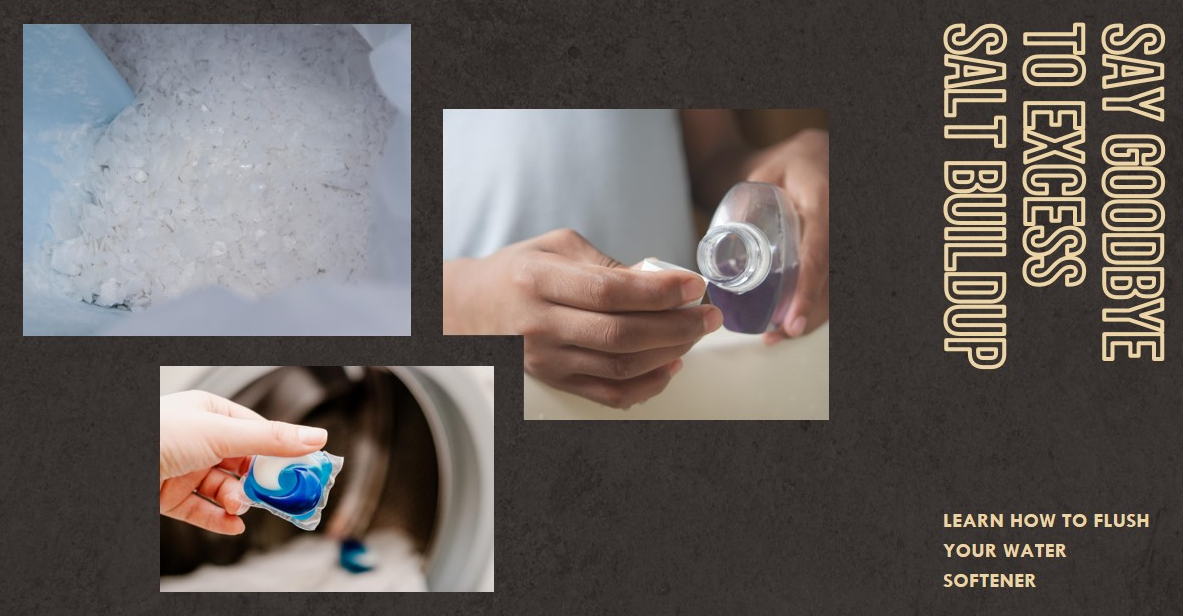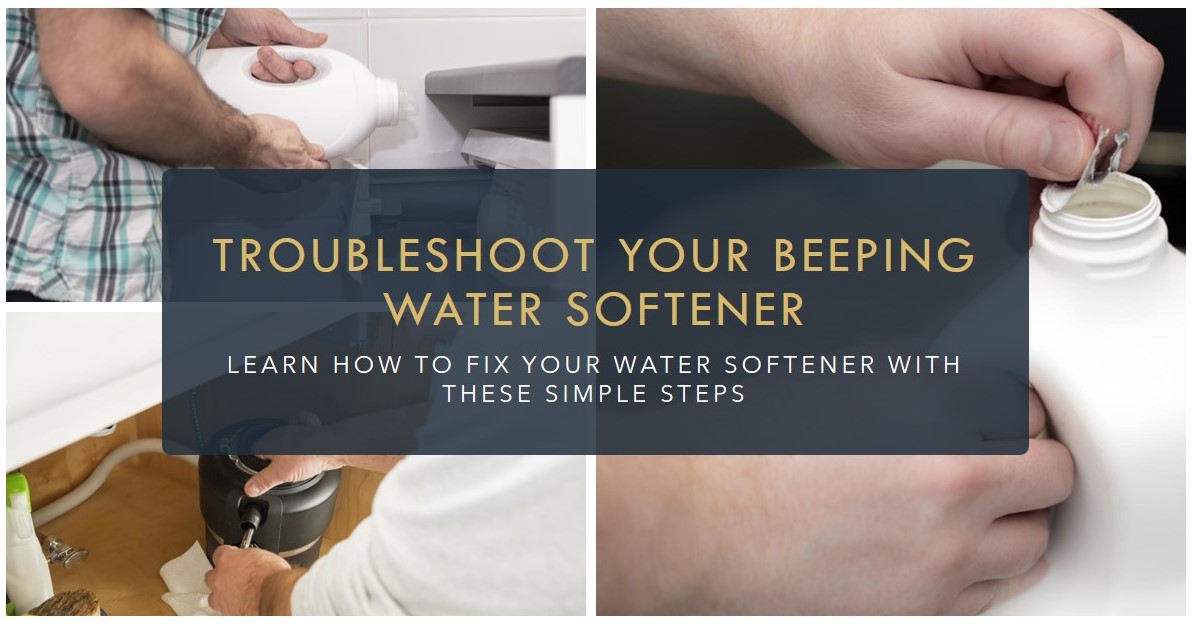Hard water can cause a variety of problems in homes and businesses, from scale buildup in pipes and fixtures to decreased efficiency of water-using appliances. A water softener is an effective solution to remove the calcium and magnesium ions that cause hard water. However, water softeners need regular maintenance to function properly, and one key task is flushing the system to remove excess salt and sediment.
What Is a Water Softener and How Does It Work?
A water softener is a whole-house filtration system that removes hardness minerals like calcium and magnesium from the water supply. The softener contains a resin bed that is charged with sodium ions. As hard water passes through this resin bed, the sodium ions are swapped for the calcium and magnesium ions in an ion exchange process. The calcium and magnesium attach to the resin beads, while the soft water flows out into your home’s pipes.
Over time, the resin bed becomes saturated with hardness minerals and needs to be recharged. A water softener has a brine tank that holds a salt solution. During the recharge cycle, the brine solution flows through the resin bed, replacing the buildup of hardness minerals with sodium ions. The hardness minerals are then flushed down the drain.
Why Is It Important to Flush a Water Softener?
Flushing a water softener serves a couple of key purposes:
- Removes Excess Salt: Over time, salt residues can build up in the resin tank and brine tank. Flushing the system helps dissolve these residues and clear out the excess salt.
- Extends Softener Lifespan: Allowing salt to accumulate can shorten the lifespan of your water softener. Flushing regularly keeps everything working properly.
- Clears Sediment: Flushing clears out any dirt, silt and sediment that may have built up in the softener. This helps keep it working at optimal efficiency.
- Enhances Water Quality: Flushing helps keep your water tasting, looking and flowing its absolute best by removing any impurities.
How Often Should You Flush Your Water Softener?
Most manufacturers recommend flushing your water softener every 3-4 months. However, the optimal flushing frequency depends on these factors:
- Hardness of Your Water: The harder your water is, the more often you may need to flush the softener. Hard water results in faster mineral buildup.
- Water Usage: Homes with above-average water use will require more frequent flushing than low-use households.
- Number of People: Larger households with more people will need to flush more often.
- Presence of Iron: Iron in the water supply can clog softeners faster.
Start by flushing every 3 months and adjust based on your unique situation. Keep an eye out for signs you may need to flush more often.
Signs It’s Time to Flush Your Water Softener
Watch for these cues from your water softener that indicate it’s time for a flush:
- Reduced water flow
- Discolored water
- Strange water tastes or odors
- Scale buildup on fixtures
- Soap scum not rinsing fully
- Dry skin after showering
- Stiff clothing after washing
- Soaps and detergents not lathering well
If you notice any of these issues in between scheduled flushes, go ahead and flush the softener to restore performance.
Step-By-Step Guide to Manually Flushing a Water Softener
Flushing a water softener manually is a straightforward process that takes about 15-20 minutes. Follow these steps:
Supplies Needed
- Bucket
- Garden hose
- Phillips screwdriver
Step 1: Turn Off the Water Supply
Locate the shutoff valve for the water supply line that runs into the softener. Turn the valve clockwise to shut off the water.
Step 2: Open the Drain Valve
At the base of the brine tank there will be a drain valve. Use a screwdriver to open the valve and allow the system to drain. Place the bucket underneath to catch water.
Step 3: Add Flushing Agent
Add 1 cup of household vinegar or a proprietary resin bed cleaner to the brine tank. This will help dissolve any accumulated salt deposits.
Step 4: Flush the System
Turn the water supply back on. Let water run through the softener for 10-15 minutes. This will flush the vinegar solution through the system and rinse away sediment and dissolved salt.
Step 5: Rinse and Reset
Turn off the water supply again. Close the drain valve once water stops flowing. Remove the bucket and hose. Turn the water supply back on and let the brine tank refill. The softener is now flushed and reset.
Step 6: Add Salt
Replenish the salt in the brine tank up to the recommended level. Your softener is ready to resume normal operation.
How to Flush a Water Softener with a Hose
Using a hose to flush the system allows you to direct the wastewater outside or to a drain. Follow these steps:
Supplies Needed
- Garden hose
- Bucket
- Phillips screwdriver
Step 1: Shut Off Water Supply
Locate the shutoff valve for the water line to the softener and turn it off.
Step 2: Open Drain Valve
Open the drain valve at the base of the brine tank.
Step 3: Connect Hose
Attach one end of the hose to the drain valve. Place the other end in a bucket or drain area outside.
Step 4: Add Vinegar
Pour 1 cup of household vinegar into the brine tank to help dissolve salt deposits.
Step 5: Flush the Softener
Turn the water supply back on. Let water run through the softener and out the hose for 10-15 minutes.
Step 6: Rinse & Reset
Turn off the water supply. Disconnect hose from the drain valve and close the valve. Turn on water supply and let brine tank refill.
Step 7: Replenish Salt
Add salt back into the brine tank up to the recommended level.
Troubleshooting Common Water Softener Flushing Problems
| Issue | Likely Cause | Solution |
|---|---|---|
| Softener won’t draw in brine | Clogged injector nozzle | Clean nozzle with vinegar |
| Low water pressure | Check hoses and valves for blockages | |
| Malfunctioning control valve | Call for service | |
| Brine tank won’t empty | Blocked drain line | Flush drain line with water hose |
| Stuck drain valve | Open with screwdriver, tap valve lightly | |
| Cloudy water | Loose resin beads | Double-check that tank lids are on securely |
| Leaking connections | Worn O-rings | Replace O-rings |
| No water flow | Bypass valve engaged | Ensure valve is set to service position |
| Salt bridge | Compacted salt | Carefully poke bridge loose with broom handle |
In most cases, running an additional flush cycle should help resolve flushing issues. But call a professional for assistance if needed.
Benefits of Flushing Your Water Softener
Flushing your system every 3-4 months provides a number of advantages:
- Optimizes softening performance
- Maximizes lifespan of system
- Saves money on salt and electricity
- Provides softer, cleaner water
- Prevents damage from mineral buildup
- Reduces risk of malfunctions
- Improves efficiency of soaps and detergents
- Keeps faucets, showers and appliances scale-free
Risks of Neglecting Softener Maintenance
Failing to flush your water softener regularly can cause some expensive problems:
- Hard water due to lack of softening
- Salt bridges forming in brine tank
- Mineral scale clogging pipes
- Corrosion damage to plumbing
- Decreased water pressure
- Reduced softener lifespan
- Complete softener failure
Avoid these issues by flushing as recommended.
Preventing Your Softener From Overfilling With Salt
To keep your water softener working properly, you need to maintain the right amount of salt. Here are tips to prevent overfilling with salt:
- Follow manufacturer guidelines for your model’s salt settings. Do not overfill.
- Use less salt if you have low water hardness. You can use less salt to regenerate.
- Upgrade to an automatic salt-saving softener. These regenerate on an as-needed basis rather than a fixed schedule.
- Use potassium chloride salt if you want to limit sodium. You can use less potassium chloride than sodium chloride.
- Add resin cleaners or salt enhancers to improve regeneration efficiency.
- Flush regularly to remove any salt buildup.
- Invest in a water softener with an accurate built-in salt level indicator.
Top Water Softeners on the Market
Several trusted brands manufacture quality water softeners for home use:
Fleck 5600SXT Water Softener
The Fleck 5600SXT is a popular metered model known for its consistent performance and easy customization of features. It effectively removes hardness and is made in the USA.
AFW Filters Water Softener System
AFW offers a US-made softener that includes value-added items like installation kits. It features an eco-friendly electronic metered valve.
Aquasana SimplySoft Water Softener Alternative
This uses all-natural NAC crystals instead of salt. It is well suited for anyone looking to limit salt intake. It requires minimal maintenance.
Nuvo H20 DPHB Water Softener
Powered by citric acid, this innovative Nuvo model is salt-free. It works well for households with 1-3 people and mildly hard water.
Pelican Salt-Free Water Softener
The Pelican system uses a filter blend to prevent scale and buildup without any salt, electricity or wastewater. It’s compact and easily installed.
Be sure to pick a properly sized system and utilize a reliable brand. Your local plumber can also recommend the best models. Installation, maintenance and local water conditions play a big role in performance.
Conclusion
Hard water minerals can cause a laundry list of problems from damaged pipes to irritated skin. Flushing your water softener every 3-4 months is crucial to optimizing its performance and longevity.
Follow the steps outlined to manually backwash your softener with normal household items. Be on the lookout for common troubleshooting issues too. Properly maintaining your system will save you money in the long run by improving efficiency and avoiding costly repairs.
Flushing your water softener periodically protects your home and ensures your water stays clean, soft and safe throughout the year. Schedule a regular routine, take note of any performance changes in your system, use quality salt products, and leverage the guidance of water treatment professionals as needed.
Key Takeaways
- Flush water softeners every 3-4 months to remove excess salt and sediment
- Signs like low water pressure indicate it’s time for a flush
- Manually backwash the softener using household vinegar and a hose
- Troubleshoot issues like cloudy water or brine tank not emptying
- Take steps to prevent overfilling the softener with salt
- Well-maintained softeners provide better water quality and system longevity





